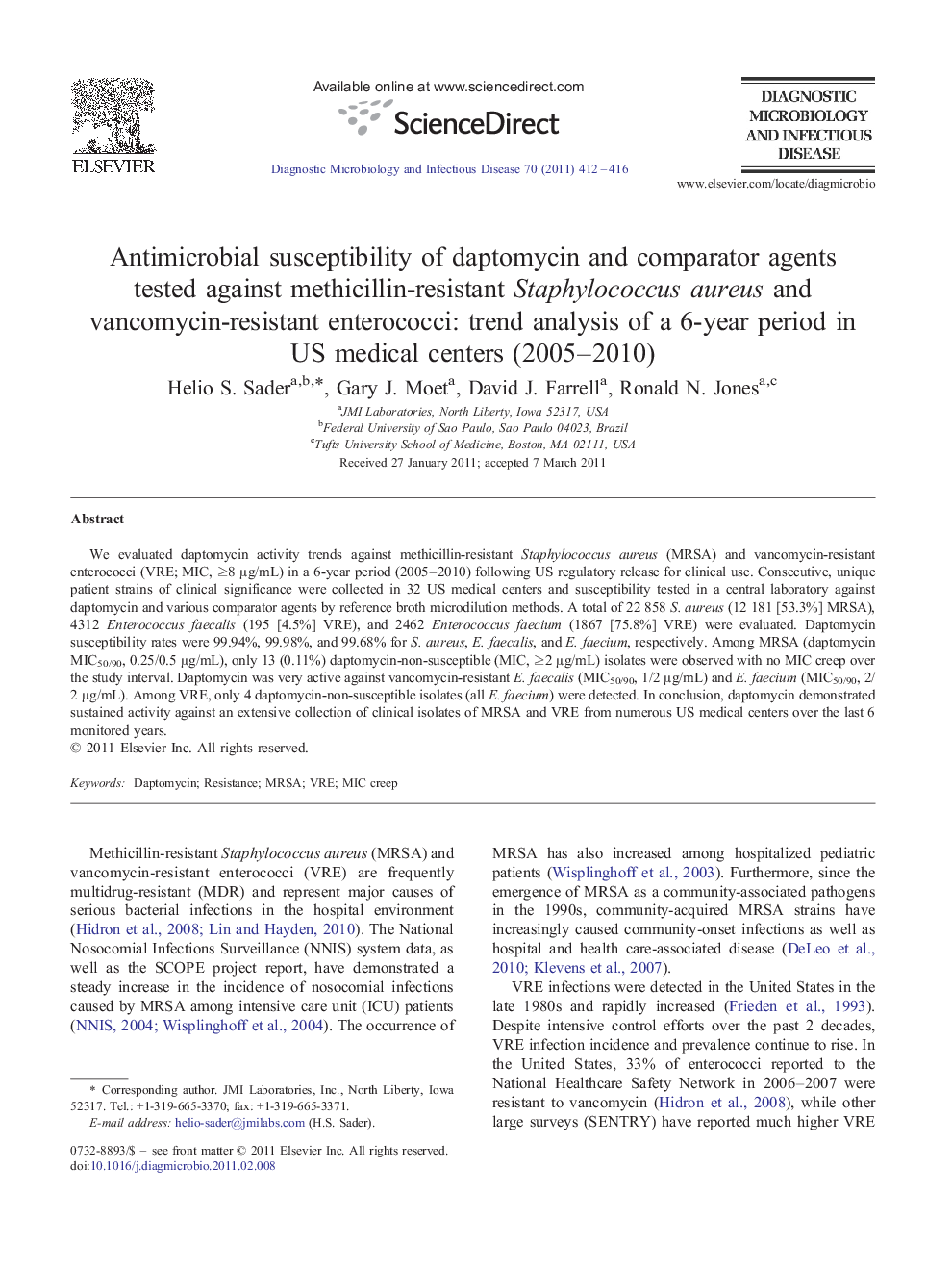| Article ID | Journal | Published Year | Pages | File Type |
|---|---|---|---|---|
| 3347459 | Diagnostic Microbiology and Infectious Disease | 2011 | 5 Pages |
We evaluated daptomycin activity trends against methicillin-resistant Staphylococcus aureus (MRSA) and vancomycin-resistant enterococci (VRE; MIC, ≥8 μg/mL) in a 6-year period (2005–2010) following US regulatory release for clinical use. Consecutive, unique patient strains of clinical significance were collected in 32 US medical centers and susceptibility tested in a central laboratory against daptomycin and various comparator agents by reference broth microdilution methods. A total of 22 858 S. aureus (12 181 [53.3%] MRSA), 4312 Enterococcus faecalis (195 [4.5%] VRE), and 2462 Enterococcus faecium (1867 [75.8%] VRE) were evaluated. Daptomycin susceptibility rates were 99.94%, 99.98%, and 99.68% for S. aureus, E. faecalis, and E. faecium, respectively. Among MRSA (daptomycin MIC50/90, 0.25/0.5 μg/mL), only 13 (0.11%) daptomycin-non-susceptible (MIC, ≥2 μg/mL) isolates were observed with no MIC creep over the study interval. Daptomycin was very active against vancomycin-resistant E. faecalis (MIC50/90, 1/2 μg/mL) and E. faecium (MIC50/90, 2/2 μg/mL). Among VRE, only 4 daptomycin-non-susceptible isolates (all E. faecium) were detected. In conclusion, daptomycin demonstrated sustained activity against an extensive collection of clinical isolates of MRSA and VRE from numerous US medical centers over the last 6 monitored years.
